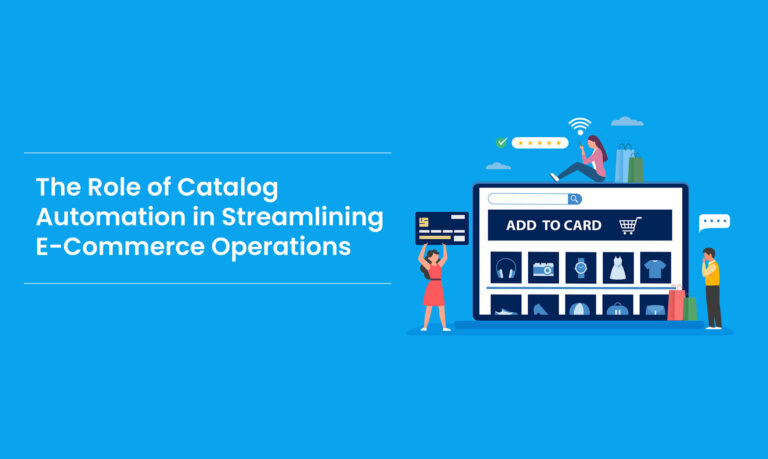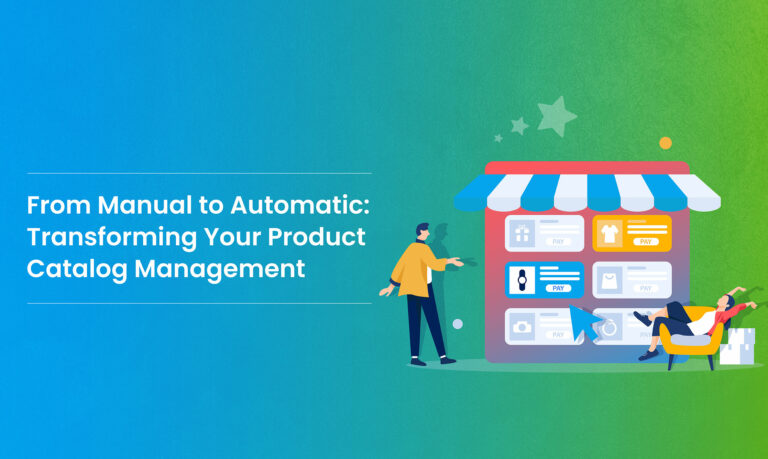Introduction
In the ever-changing world of contemporary business, where every choice determines your competitive advantage, choosing appropriate tools is critical. Being a mid-management decision-maker, the pressure is on you to select an ideal catalog management software. Enter the world of Rubick.ai – a leading solution designed to revolutionize how you handle product information. In this article, discover the crucial criteria governing your choice, ensuring that your catalog management aligns seamlessly with your organization’s growth and operational efficiency. Let’s delve into the intricate realm of catalog management, where Rubick.ai emerges as your strategic ally.
Understanding Catalog Management Software: A Brief Overview
Catalog management software is responsible for some of the key aspects that make it easier to manage product data within an organization. It does not stop at merely creating a catalog; it guarantees that your product information is accurate, uniform, and readily accessible. While enterprises grow their product lines and target different markets, the necessity for effective catalog management becomes more evident. The software is the backbone of your product information strategy during this digital age, where consumer expectations are at their peak. It efficiently handles vast datasets, accommodating diverse product attributes, images, and specifications.
An advanced catalog management system helps simplify the storage and retrieval of data. It allows companies to change along changing market trends so that your product information will be agile in a competitive landscape. Catalog management software is vital for any business seeking success in today’s competitive e-commerce and retail environment due to its ability to update product data quickly.
The Core Criteria for Selecting the Right Catalog Management System
Listed below are the points to remember while selecting a perfect catalog management system for your business.
1. Centralized Data Management
Efficient catalog management begins with centralizing product data. A strong solution should act as a central data store, allowing you to control access and update information at your convenience.
Centralization facilitates process flows, eradicating mistakes and ensuring uniformity, and provides a foundation for improved team coordination. This centralized approach creates a unified environment where all individuals operate with the most current data, resulting in no silos and promoting cross-functionality.
Go for a solution that consolidates and turns data into a collaborative asset, encouraging your organization to develop toward perfect efficiency and result-driven success.
2. Scalability
Your business is dynamic, and so should your catalog management software. Choose a scalable solution that matches your organization’s dynamics to support adding new product lines and growing data quantity without struggle.
Scalability ensures that the software will continue to work and adapt as your business changes, laying a powerful foundation for further achievements. This flexibility meets your current demands and provides a viable long-term solution that can scale with your organization, allowing you to avoid the need for regular software upgrades or replacements.
A catalog management software that scales ensures sustainability; therefore, you can focus on strategic initiatives rather than fighting the limitations of the software.
3. User-Friendly Interface
When dealing with the fast-moving business world, where time is a valuable commodity, an interface that offers ease of use becomes beneficial and essential.
Select a catalog management software with an interface designed in such a way, thus requiring minimal training for the team. Well-designed interfaces of software systems enable rapid navigation to make tasks simple and enjoyable for your team and contribute to a positive working atmosphere.
The time saved on training can be invested in something more important, resulting in better employee performance and gratification. A user-friendly interface is not limited to functionality; it speaks directly to the end-user, improving their experience and performance in your organization.
This standard is more than a checklist item – it’s an investment in streamlined and overall enjoyability for the team, which produces immediate operational results that your business can capitalize on.
4. Integration Capabilities
Smooth compatibility with existing systems is a necessary condition. Deftly, your catalog management software should work seamlessly with ERP, CRM, and e-commerce systems, providing a well-integrated digital framework. This data integration not only increases efficiency but also avoids manual entry errors.
A strong integration framework helps to make your software an integral part of the entire business infrastructure, where data flows effortlessly across departments and systems. This interdependence can help develop a better collaboration, ease the processes, and better understand your product data landscape. Select a solution with unmatched integration capacity, enabling your company to grow amidst today’s digitally driven world.
5. Customization Options
No two companies are identical, and your catalog management requirements may be specific. A customizable solution enables you to personalize the software according to your needs.
From adding new data fields and modifying existing templates to writing customized workflows, the customization process lets you ensure that every aspect fits perfectly with your business processes. This agility enables you to tailor the software according to how your business develops, offering a scalable solution that grows with your organization.
Although a flexible customization framework makes software more adaptable, it also provides the basis for an appropriate response to your business environment’s dynamic needs.
Select a catalog management solution that addresses your current requirements and forecasts and accommodates your future needs, providing an integrated experience that exceeds the one-size-fits approach.
6. Data Security and Compliance
As the focus on data privacy and security grows, your chosen software must address these facets. Ensure attention to strong role-based access control, sophisticated data encryption, and thorough regulatory compliance.
This also means that your product information is protected from online attacks and has the highest protection possible. A holistic data security and compliance strategy assures your organization’s clients and protects your enterprise against legal implications.
Selecting such catalog management software with these sophisticated functionalities is, in a sense, an investment into the ultimate integrity and reliability of your business processes.
7. Workflow Automation
Efficiency is critical, and workflow automation can greatly contribute to it. Select a catalog management solution that provides strong automation functionality, minimizes manual interference, and simplifies such activities.
This is not only time-saving but also error reduction. With a full-fledged workflow automation feature, your team can concentrate on high-level tasks and increase the efficiency of their efforts. Automating repetitive processes like data updates, approvals, and so forth can create a smoother workflow that adapts to your changing business needs. Starting with an advanced workflow automation solution is investing in sustainable efficiency and operational quality.
8. Reporting and Analytics
Successful businesses are built on data-driven decision-making. Make sure that the catalog management software you use has comprehensive reporting and analytics capabilities By providing access to timely data, you are informed about how and why decisions should be made to determine whether or not particular strategies work better than others.
The reporting capabilities, such as personalized dashboards and forecast analytics, help you better understand your product’s performance and customer behavior trends in the market. This data-driven approach empowers you to make better decisions and enables constant innovation and adaptation to the quickly changing market environment.
The Role of Product Information Management (PIM)
Incorporating Product Information Management (PIM) in your catalog management strategy is a game changer. PIM takes the conversation beyond data basics, getting into product quality and completeness. It guarantees that your product information remains accurate and consistent and is augmented with details meaningful to the audience. PIM unifies and standardizes product data from several sources, eliminating inconsistencies to improve the customer journey.
The integrated approach leads to a convincing product narration that builds customer trust and loyalty. Catapult your catalog management to new levels via PIM – a sound long-term investment for sustainable business growth.
Conclusion
Selecting the ideal catalog management software in this dynamic business setting is a critical choice that can define how your organization will be able to function and compete. Among the leaders in this field, Rubick.ai provides a solution that meets all the critical criteria discussed above. Streamline your processes, enhance productivity, and stay ahead in the market with Rubick.ai – your trusted partner in catalog management.

